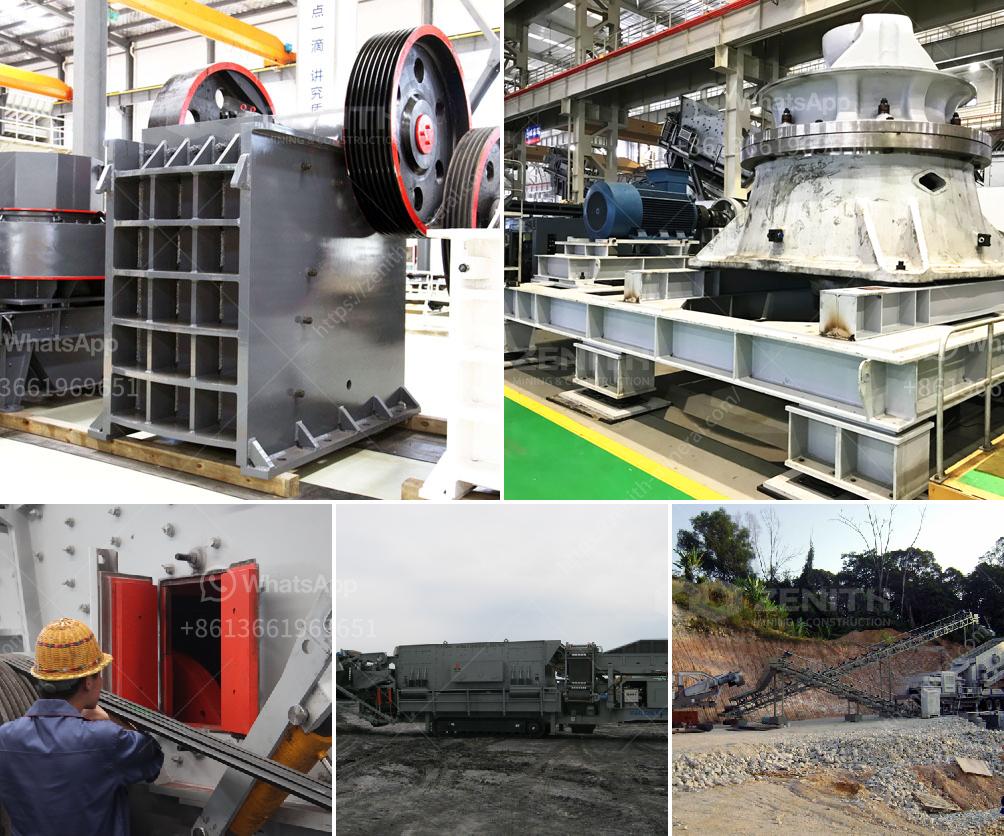A jaw crusher is a type of machine commonly used in the mining and construction industries to break down large rocks into smaller, more manageable pieces. The operation of a jaw crusher involves several key components and processes, which I will explain in detail.
Components of a Jaw Crusher
- Fixed Jaw Plate: This is a stationary component that forms one side of the crushing chamber.
- Movable Jaw Plate: This is a moving component that forms the other side of the crushing chamber.
- Pitman: This is a heavy-duty shaft that moves the movable jaw plate.
- Toggle Plates: These are safety devices that protect the crusher from damage by breaking if the machine is overloaded.
- Flywheel: This stores energy and helps to maintain a consistent speed during operation.
- Eccentric Shaft: This drives the pitman and causes the movable jaw plate to move in a reciprocating motion.
- Frame: This is the main structure that supports all other components.
Operation Process
- Feeding: Large rocks are fed into the top of the jaw crusher through a hopper. The size of the feed opening determines the maximum size of the input material.
- Crushing: The eccentric shaft rotates, causing the pitman to move the movable jaw plate back and forth. This motion compresses the material against the fixed jaw plate, breaking it into smaller pieces.
- Discharge: The crushed material falls through the bottom of the crushing chamber and is collected for further processing or use.
Detailed Steps
- Initial Setup: Before starting the jaw crusher, ensure that all safety protocols are followed. Check that the machine is properly lubricated and that all components are in good working condition.
- Starting the Machine: Turn on the power supply and start the motor. The flywheel will begin to rotate, storing energy that will be used to drive the eccentric shaft.
- Feeding Material: Gradually feed the material into the hopper. Avoid overloading the machine, as this can cause damage to the toggle plates and other components.
- Crushing Action: As the eccentric shaft rotates, it moves the pitman, which in turn moves the movable jaw plate. The material is compressed between the movable and fixed jaw plates, breaking it into smaller pieces.
- Discharge and Collection: The crushed material falls through the discharge opening at the bottom of the crusher. It can then be collected and transported for further processing or use.
Maintenance and Safety
- Regular Inspection: Regularly inspect all components for wear and tear. Replace any worn or damaged parts to ensure efficient operation.
- Lubrication: Proper lubrication of the moving parts is essential to prevent excessive wear and overheating.
- Safety Protocols: Always follow safety protocols to prevent accidents. Ensure that all personnel are trained in the safe operation of the jaw crusher.
- Emergency Stops: Be familiar with the location and operation of emergency stop buttons. In case of an emergency, these can be used to quickly shut down the machine.
Conclusion
The operation of a jaw crusher involves feeding large rocks into the machine, where they are crushed by the reciprocating motion of the movable jaw plate against the fixed jaw plate. The crushed material is then discharged through the bottom of the machine. Regular maintenance and adherence to safety protocols are essential to ensure the efficient and safe operation of the jaw crusher.

